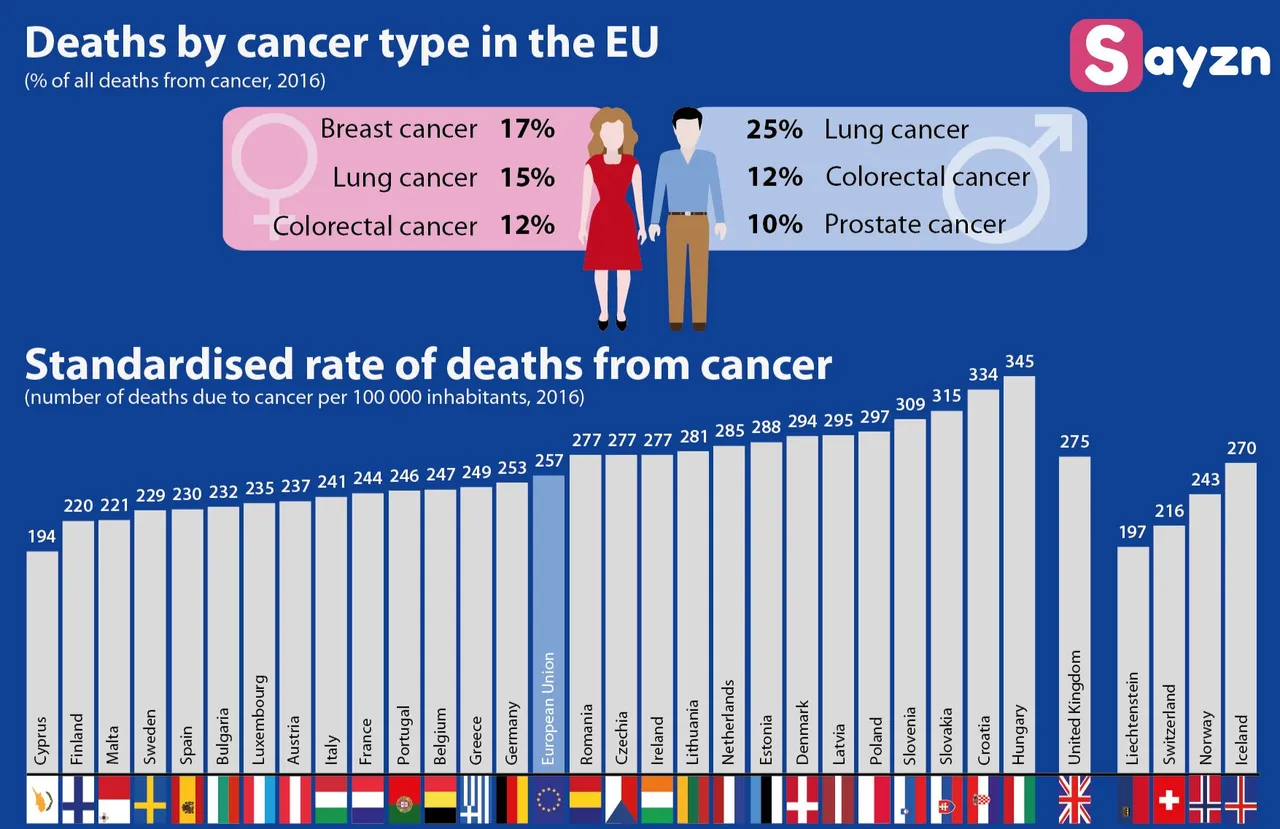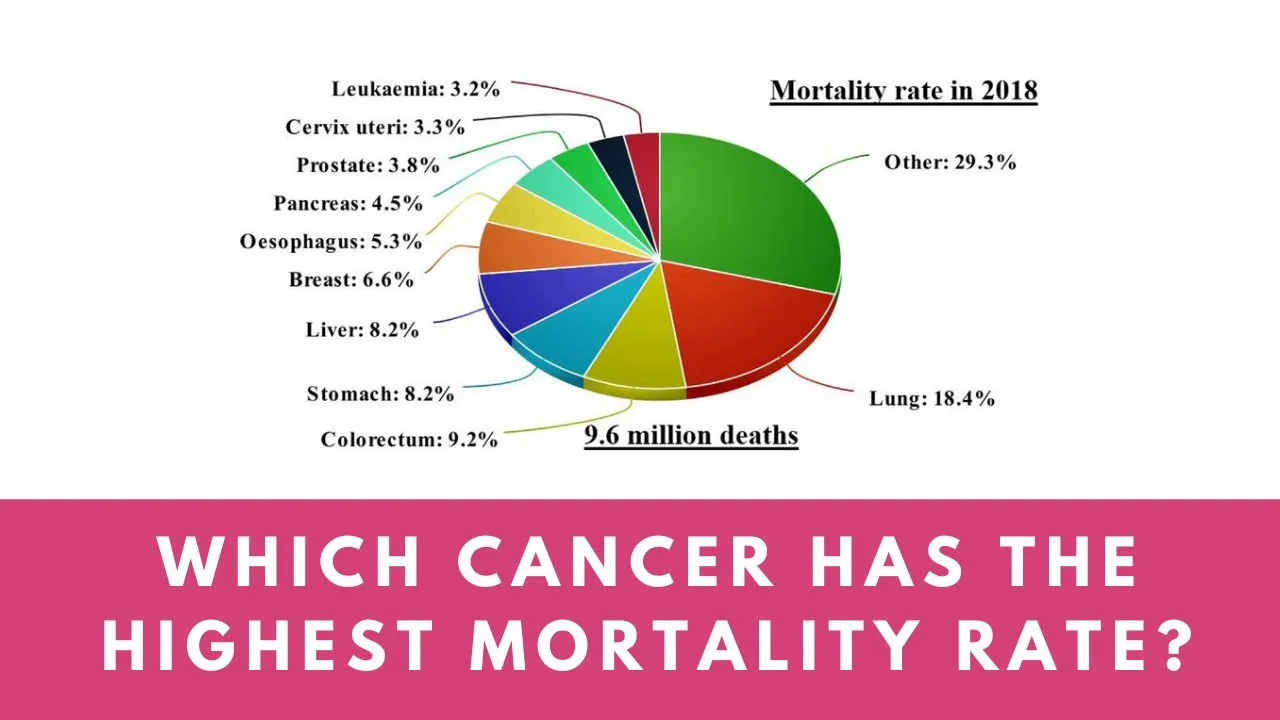There are many types of cancer. Cancer can occur in any organ imaginable, except for some organs and tissues such as hair and nails. Let us know about different types of cancer and mortality rate
Our most common cancers include lung cancer, Breast cancer liver cancer, esophageal cancer, Stomach cancer Colon cancer, leukemia, lymphoma, prostate cancer, ovarian cancer, cervical cancer, thyroid cancer, pancreatic cancer, etc.
Some patients asked: Which cancer is the most serious? Today we’re going to talk about the two cancers with the highest mortality rates.
(1) Pancreatic cancer is the queen of all cancers
If we look at the cure rate and mortality rate of cancer, the king of cancers is none other than pancreatic cancer. Pancreatic cancer has the highest mortality rate and lowest cure rate of all cancers.
With the development of medicine, the survival rate of most tumors has improved significantly, but the survival rate of pancreatic cancer has stagnated. The 5-year survival rate is only 5 to 10%. This means that after being diagnosed with pancreatic cancer, only about 5% of people can survive longer than 5 years. In fact, most pancreatic cancer patients die within six months of being diagnosed with pancreatic cancer. For breast cancer, colon cancer and other tumors, the 5-year survival rate is more than 50%. The survival rate for thyroid cancer is highest and can exceed 90%.
There are several reasons why pancreatic cancer survival rates are so low:
Pancreatic cancer cells are highly malignant, highly invasive and progress rapidly. They easily invade surrounding organs and tissues and easily metastasize to lymph nodes. The pancreas is located deep in the abdomen. Early-stage pancreatic cancer has no symptoms. When discovered, it is often in the middle and late stages. The pancreas is surrounded by important organs. The pancreas is surrounded by the stomach, liver, bile duct, gallbladder, spleen, large abdominal vessels, etc., which makes pancreatic surgery difficult and causes high perioperative mortality. Pancreatic cancer is not sensitive to radiation and chemotherapy and no specificities have been found. Target, targeted therapy and immunotherapy had little effect.
(2) Liver cancer
In addition to pancreatic cancer, the mortality rate for liver cancer is also high. If you compare pancreatic cancer to a lion, then liver cancer is a tiger, and both are equal. The 5-year survival rate for liver cancer is about 12%. Liver cancer is often caused by hepatitis, alcoholic liver disease and fatty liver disease, which lead to cirrhosis and then develop into liver cancer.

Due to liver cirrhosis and impaired liver function, after liver cancer occurs, cancer cells grow very quickly and are prone to intrahepatic metastasis and blockage of blood vessels. The recurrence rate of liver cancer is extremely high and liver cancer is not sensitive to radiation therapy and chemotherapy, making its treatment very difficult.
Early stage cancer has a high survival rate
We have just introduced the two most serious tumors. If the tumors are detected early, the survival rate can be significantly improved. The five-year survival rate for liver cancer less than 3 centimeters in diameter is over 80%. The five-year survival rate for stage 1A pancreatic cancer is over 40%. Some studies have found that the 5-year survival rate for pancreatic cancer patients with lymph node metastases is only about 10%. and patients with negative lymph nodes have a survival rate of 30%.
In addition to liver cancer and pancreatic cancer, other malignant tumors have higher early survival rates, such as breast cancer, stomach cancer, colon cancer, lung cancer, etc. The cure rate of early stage tumors is over 90%. In the late stages of cancer, extensive metastases occur throughout the body and the survival rate of all tumors drops sharply.
The following groups are at high risk of pancreatic cancer: (1) people who smoke and drink for a long time, especially over 40 years old; (2) people with pancreatic cancer in their families; (3) people with diabetes; (4) patients with chronic pancreatitis; (5) patients with bile duct stones and often biliary pancreatitis; (6) People with severe obesity, overweight and hyperlipidemia. There is currently no uniform screening guideline for these high-risk groups. You may consider screening for pancreatic cancer starting around age 40. Color Doppler ultrasound appears to be a more cost-effective method, but the accuracy of color Doppler ultrasound is low. Abdominal CT, endoscopic ultrasound and MRI examination are a more accurate method. Elevated CA-199 has some evidence of pancreatic cancer. You may also consider blood tests to check for CA-199.
China
Liver cancer is common in China, and more than half of all liver cancers worldwide occur in China. Annual screening is recommended for the following people starting at age 40:
1. Infection with hepatitis B virus (HBV) and/or hepatitis C virus (HCV); 2. Long-term alcoholism; 3. Non-alcoholic steatohepatitis; 4. Long-term consumption of food contaminated with aflatoxin; 5. Various causes of liver cirrhosis and people with a family history of liver cancer. Serum alpha-fetoprotein (AFP) and liver ultrasound are the main means of early detection. For high-risk groups, it is recommended to undergo examinations at least every 6 months.
Overall, regular physical examinations and early detection of cancer are crucial. I hope everyone pays attention to their own bodies, chooses appropriate screening methods according to their own condition, and undergoes regular physical examinations.




